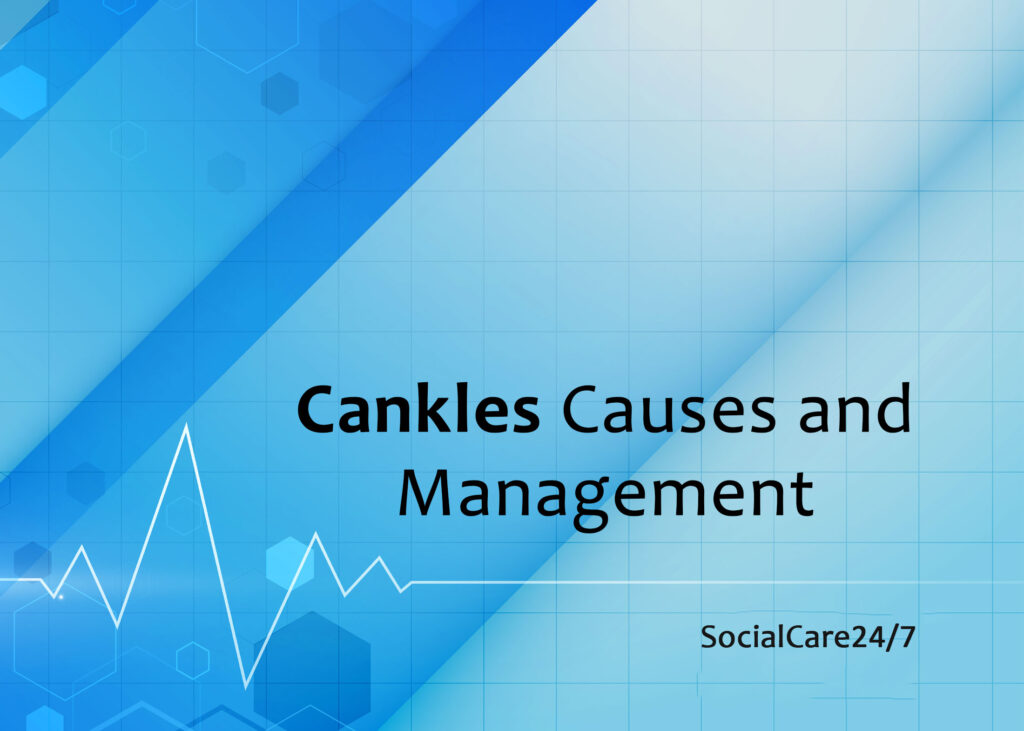Cankles are thicker ankles that resemble the lower calf. This non-medical phrase combines calves and ankles also it describes a common anxiety, whether related to genes, behaviours, or health. Some people just see cankles as a physical trait. For others, they may indicate a medical issue or unhealthy habit that needs treatment.
This article explains cankles causes and treatment to help you understand and manage this problem.
Genotypes and Personalities
Some genes are more likely to be present in people with cankles. Some people are more likely to have bigger feet because of how their bodies store fat or build muscle. These conditions may make the lower leg appear more extensive and the calf and ankle blend.
Not all inherited tendencies are negative or health risks. Knowing that it’s routine can help those who don’t like their feet accept their bodies. Some people can shape their calves and ankles by changing their lifestyle or exercising. These attempts may not affect genetic patterns.
The Edema Fluid Retention Factor
Edema, or fluid retention, causes most cankles. Too much fluid in the feet, ankles, and legs can swell and remove the lower leg’s natural curvature. Edema can result from prolonged sitting or standing, injuries, or medical issues.
Vein failure makes it hard for veins to transfer blood from the legs to the heart, causing edema. Because of this condition, blood vessel fluid spills into surrounding tissues, swelling them. Lymphedema can induce lower limb fluid buildup due to lymphatic congestion or lymph node injury.
Treating edema involves improving circulation, treating underlying health issues, and changing your lifestyle, such as eating less salt and wearing compression tights.
Lifestyle and Habits
Our lifestyles affect how our cankles look. Foods high in sodium cause the body to retain water and swelling of the ankles and feet results. Obesity raises the risk of fluid accumulation and decreases blood flow because of more strain on the lower legs.
Long periods of sitting or standing can also impair circulation and enlarge the legs. This applies mainly to folks who don’t move much or work long hours on their feet. Tight socks or shoes can also cause fluid to build up and highlight cankles.
Staying active, avoiding tight garments, and taking breaks to stretch and move during prolonged inactivity can prevent this condition.
Ankle Injury, Swelling
Sprains, fractures, and strains can produce localized swelling that makes ankles look like cankles for a brief time. Ankle injuries induce the body’s natural inflammatory response to transfer fluid and blood to the injured area, swelling and hurting.
Damage to the ankle’s talus bone can cause osteochondral defects (OCD), where cartilage fractures or blisters prolong swelling and instability. Surgery or physical therapy may reduce edema and restore movement.
Changes from pregnancy
Foot swelling can occur during pregnancy due to bodily changes. Lower leg swelling is normal when blood volume rises, and the body retains water for the baby. Hormonal changes relax blood vessels, making water retention easier.
Extreme or sudden swelling could point to preeclampsia, a dangerous pregnancy disorder that increases blood pressure. Preeclampsia calls for quick medical intervention and is unsafe for mother and child.
Women can lift their feet, wear comfortable shoes, and conduct light workouts to enhance circulation and reduce pregnancy edema. Staying hydrated and reducing salt can also reduce fluid buildup.
Medications that cause swelling
Some medications might worsen lower leg swelling, causing cankles. Some examples are:
- Antidepressants: Tricyclic antidepressants and MAOIs might cause water retention.
- Calcium channel blockers: These medicines may cause leg and foot swelling in high blood pressure patients.
- Treatment of Hormones: Birth control medications, estrogen replacement, and testosterone treatment can induce fluid buildup.
- Steroids: Steroids, used to reduce inflammation, might cause water retention.
Cankle-related health risks
Cankles may indicate a serious health issue that requires prompt treatment. Ankle swelling can cause significant health issues.
- Congestion-related heart failure: The legs fill with fluid when the heart is weak because it pumps blood poorly.
- Kidney pain: Swelling occurs when faulty kidneys can’t eliminate excess water and salt.
- Liver damage: Liver enlargement from cirrhosis can induce leg fluid buildup.
- Blood clots: The limb can swell, get red, and feel warm suddenly from a clot.
- Lymphedema: Leg swelling results from lymphatic system injury.
- Lip swell: This condition causes abnormal fat accumulation in the legs and ankles, particularly in women.
Effective management and prevention
Treatment for cankles depends on their cause. Lifestyle adjustments, including exercising, eating well, and reducing salt, help reduce swelling from water retention.
Compression stockings, lymphatic drainage massages, and diuretics (under medical supervision) can reduce fluid buildup.
Cosmetic treatments like liposuction may help genetically predisposed people improve their ankle shape. Before considering these procedures, see a doctor.
Conclusion
Although cankles are usually benign, some people find them embarrassing. Understanding their roots and remedies will help you improve your health, lower swelling, and boost your confidence about your appearance.
Dealing with the reasons for cankles—genetics, lifestyle, or medical—is the best method to improve them. Talk to a doctor about acute or long-lasting swelling for immediate relief and peace of mind.
Source Links:



